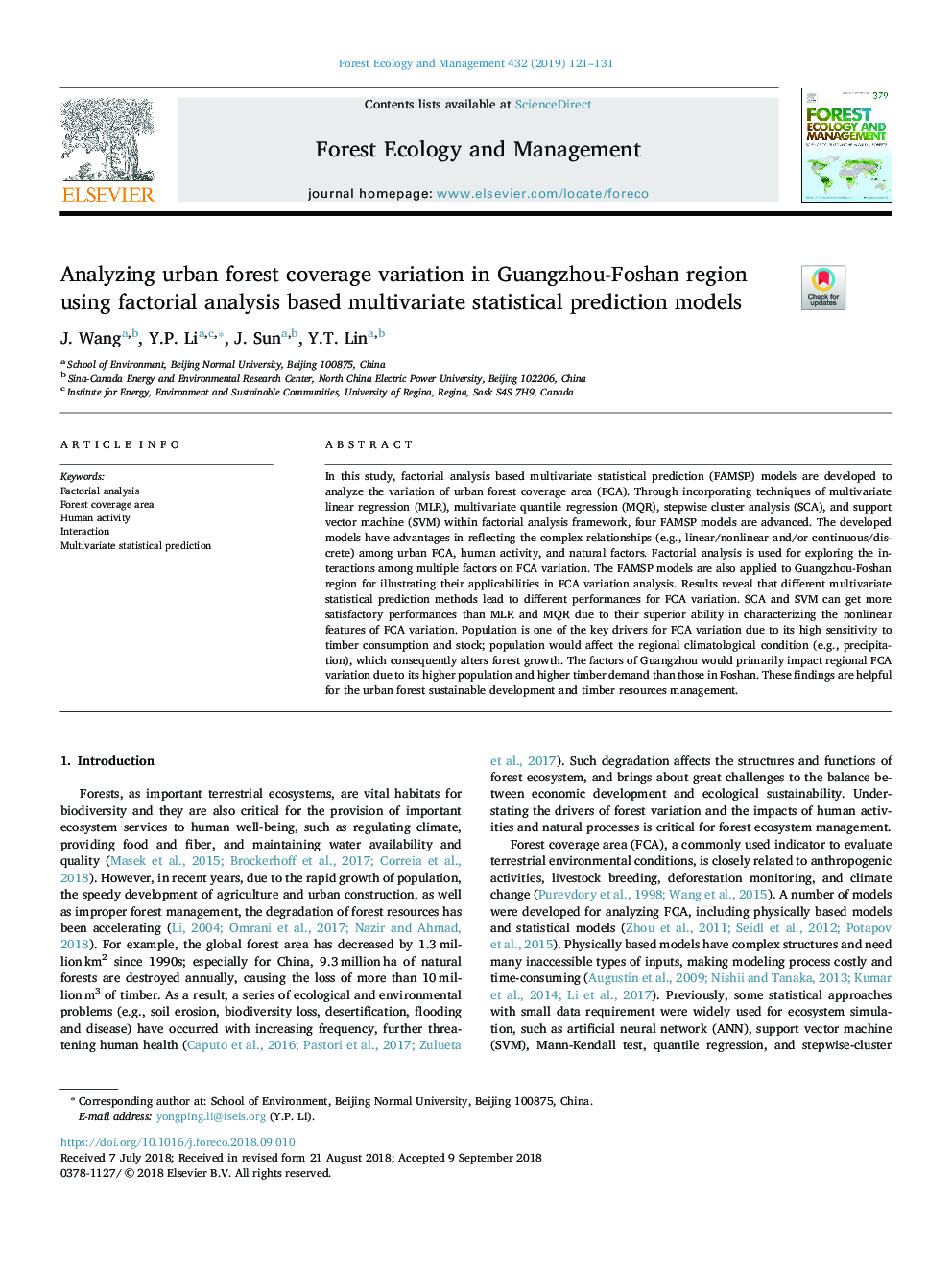| Article ID | Journal | Published Year | Pages | File Type |
|---|---|---|---|---|
| 10150045 | Forest Ecology and Management | 2019 | 11 Pages |
Abstract
In this study, factorial analysis based multivariate statistical prediction (FAMSP) models are developed to analyze the variation of urban forest coverage area (FCA). Through incorporating techniques of multivariate linear regression (MLR), multivariate quantile regression (MQR), stepwise cluster analysis (SCA), and support vector machine (SVM) within factorial analysis framework, four FAMSP models are advanced. The developed models have advantages in reflecting the complex relationships (e.g., linear/nonlinear and/or continuous/discrete) among urban FCA, human activity, and natural factors. Factorial analysis is used for exploring the interactions among multiple factors on FCA variation. The FAMSP models are also applied to Guangzhou-Foshan region for illustrating their applicabilities in FCA variation analysis. Results reveal that different multivariate statistical prediction methods lead to different performances for FCA variation. SCA and SVM can get more satisfactory performances than MLR and MQR due to their superior ability in characterizing the nonlinear features of FCA variation. Population is one of the key drivers for FCA variation due to its high sensitivity to timber consumption and stock; population would affect the regional climatological condition (e.g., precipitation), which consequently alters forest growth. The factors of Guangzhou would primarily impact regional FCA variation due to its higher population and higher timber demand than those in Foshan. These findings are helpful for the urban forest sustainable development and timber resources management.
Related Topics
Life Sciences
Agricultural and Biological Sciences
Ecology, Evolution, Behavior and Systematics
Authors
J. Wang, Y.P. Li, J. Sun, Y.T. Lin,
